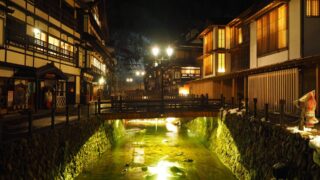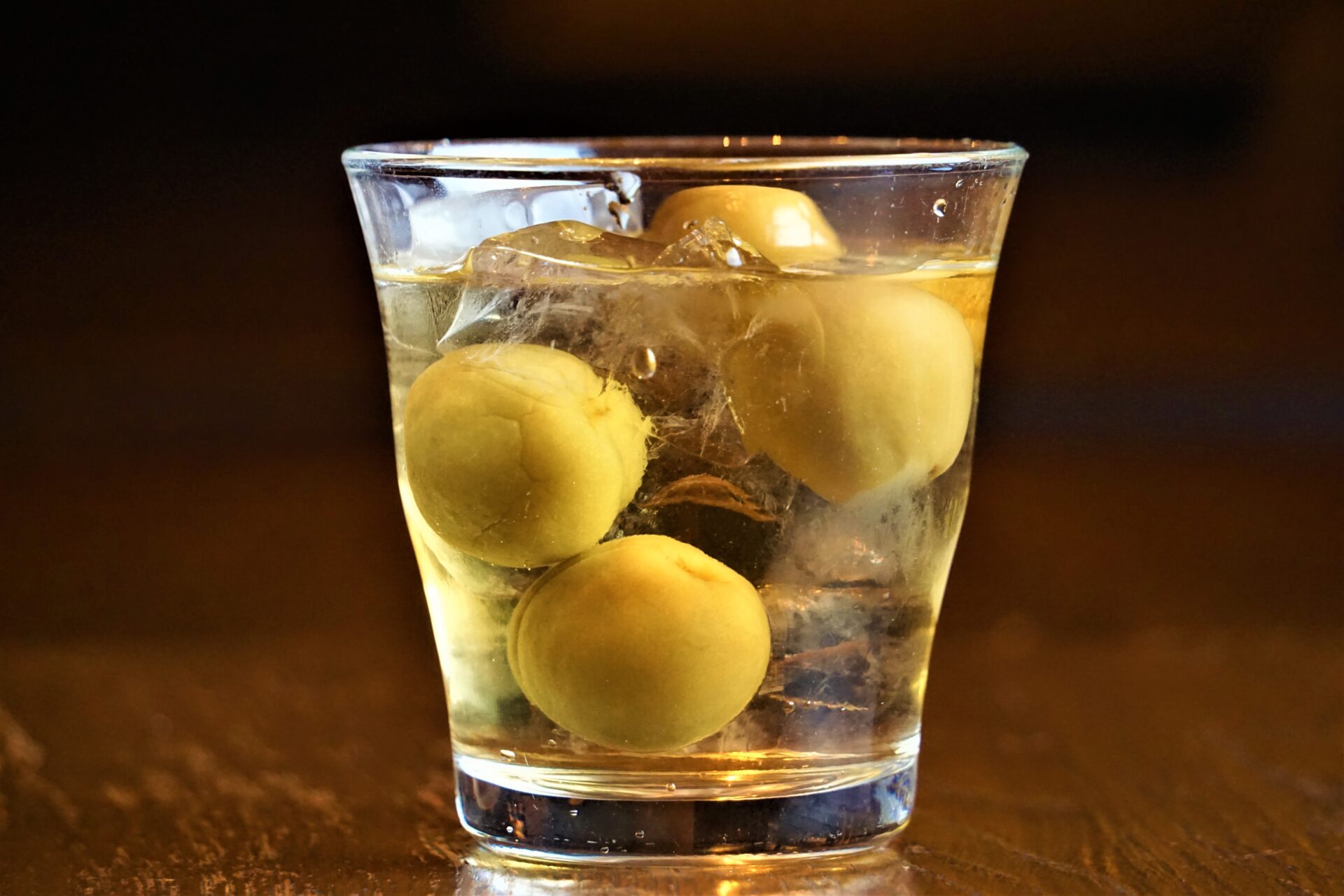Since ancient times, many different types of instruments have played a part in Japan’s musical history. Today, unfortunately, the average person rarely gets the chance to see or listen to them except on special occasions, including traditional concerts, recitals, festivals and other seasonal events.
While the number of people playing these traditional instruments has decreased in recent years, the unique and beautiful sounds still fascinate many and are becoming more popular overseas. What are some famous traditional Japanese instruments? How can you tell the difference between them? We’ve got you covered with this list of Japan’s traditional musical instruments!
1. Koto (箏)
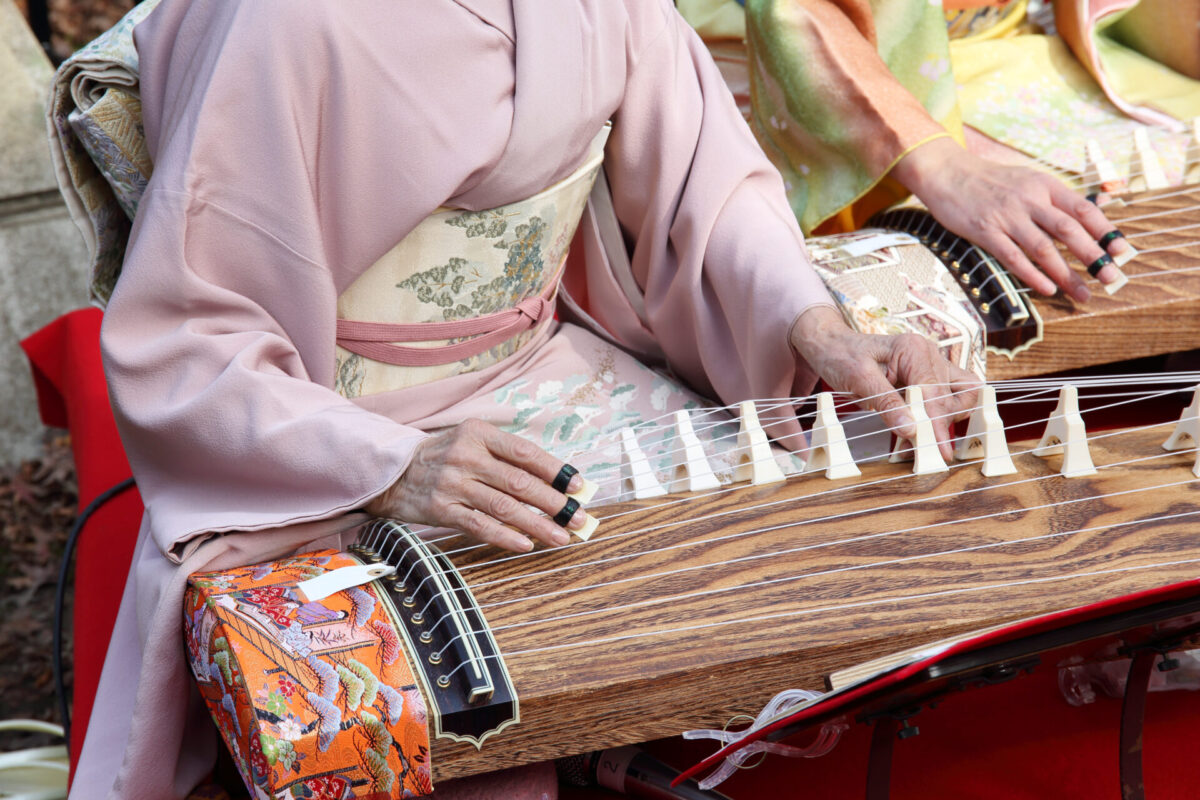
Koto is a Japanese harp and has a long history. It was originally invented in China and later introduced in Japan during the 7th or 8th century. A traditional koto consists of a long wooden main body with thirteen strings attached to it.
The koto is played using your right hand’s thumb, index finger and middle finger, with the fingers covered by ivory fingerpicks called tsume (爪). These fingerpicks help you accurately pluck the strings to produce a beautiful sound similar to western harps. The koto is typically placed horizontally on the floor, and the koto player kneels down next to it, sitting in the so-called seiza (正座) position when playing.
Koto experience in Tokyo

Koto Experience and Live Performance at a Japanese-style House in Tokyo offers an introduction to the instrument and a lesson with a master at a traditional home. At the end of the experience, you can see the master’s performance playing koto beautifully right in front of you while you enjoy Japanese tea and sweets. After the experience, you will know how to play a few songs by koto!
2. Shamisen (三味線)

Shamisen is probably one of the most famous traditional Japanese instruments. Some believe that the shamisen was originally invented in China and called sangen (三弦). During the late 14th or early 15th century, it was introduced from China to Okinawa Prefecture, and local people started calling it sanshin (三線).
Sanshin was played at special ceremonies held at the court of the Ryukyu Kingdom which independently ruled Okinawa from the early 15th century to the 19th century. Even today, the sanshin is essential to Okinawan culture and its folk music. In the 16th century sanshin became popular across Japan and known as shamisen (三味線).
While the sanshin and the shamisen share a similar shape and other features, there are slight differences between them that are hard to recognize for the uninitiated. Sanshin are typically smaller than shamisen, and the wooden body is often covered in snakeskin. Shamisen, on the other hand, have a large body typically covered with dog or cat skin, or sometimes synthetic leather, instead of snakeskin.
When playing the sanshin, players use their fingers (sometimes with fingerpicks) to pluck the strings. However, the shamisen is played using a wooden plectrum called bachi (バチ) to strike the strings.
Shamisen experience in Tokyo

Enjoy learning about the shamisen and how to play with this shamisen experience in Tokyo. The skilled instructor will teach you about the instrument and its history first, and you will soon learn how to play the shamisen!
3. Biwa (琵琶)
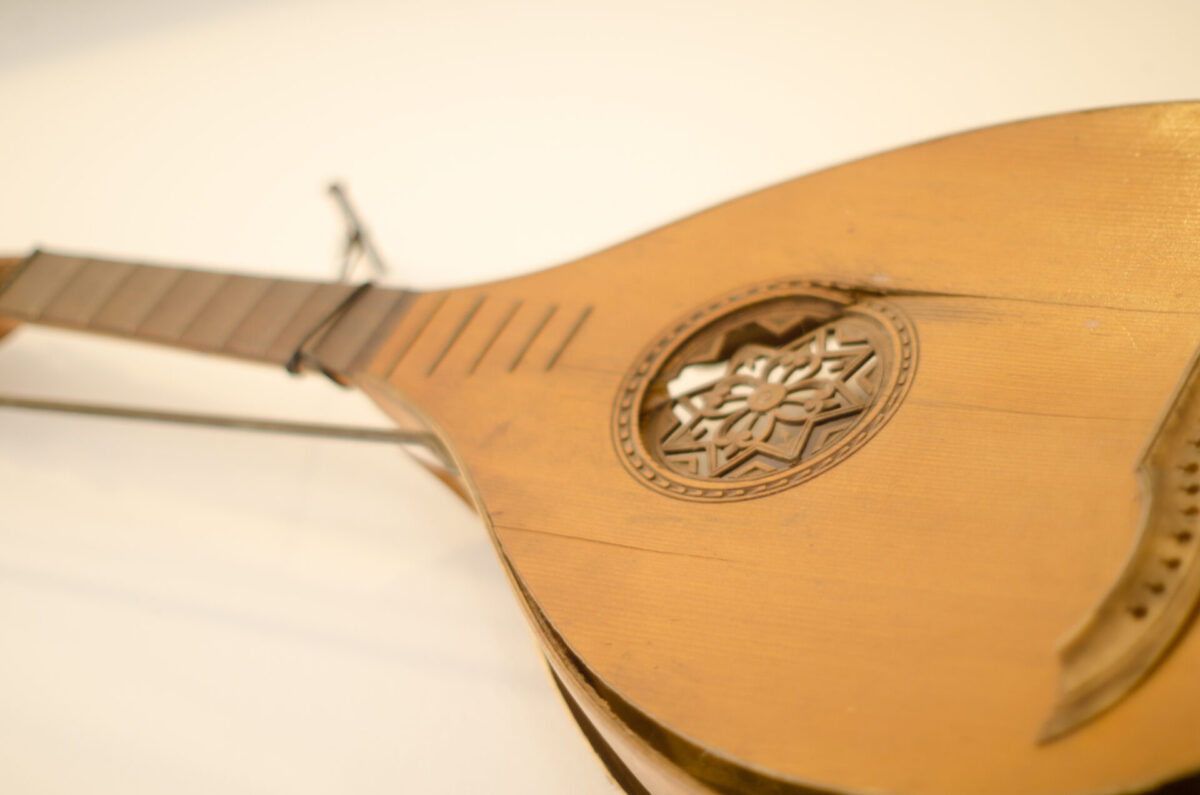
Biwa is a Japanese short-necked lute which has been played for centuries, not only in Japan but in other Asian countries as well. It is believed that the origin of the biwa can be found in ancient China and that it spread through Asia, including Japan, during the Nara period (710 -794).
In the Heian period (794- 1192), biwa became popular among blind Buddhist monks wandering the country. They were traveling performers called Biwa Hoshi (琵琶法師), and they made money by performing and captivating people with their biwa skills.
Traditionally, the biwa is made up of four or five strings of different thicknesses. The strings are attached to a wooden body, and players can produce different types of sound by plucking each string with a large wooden plectrum.
4. Taiko (太鼓)
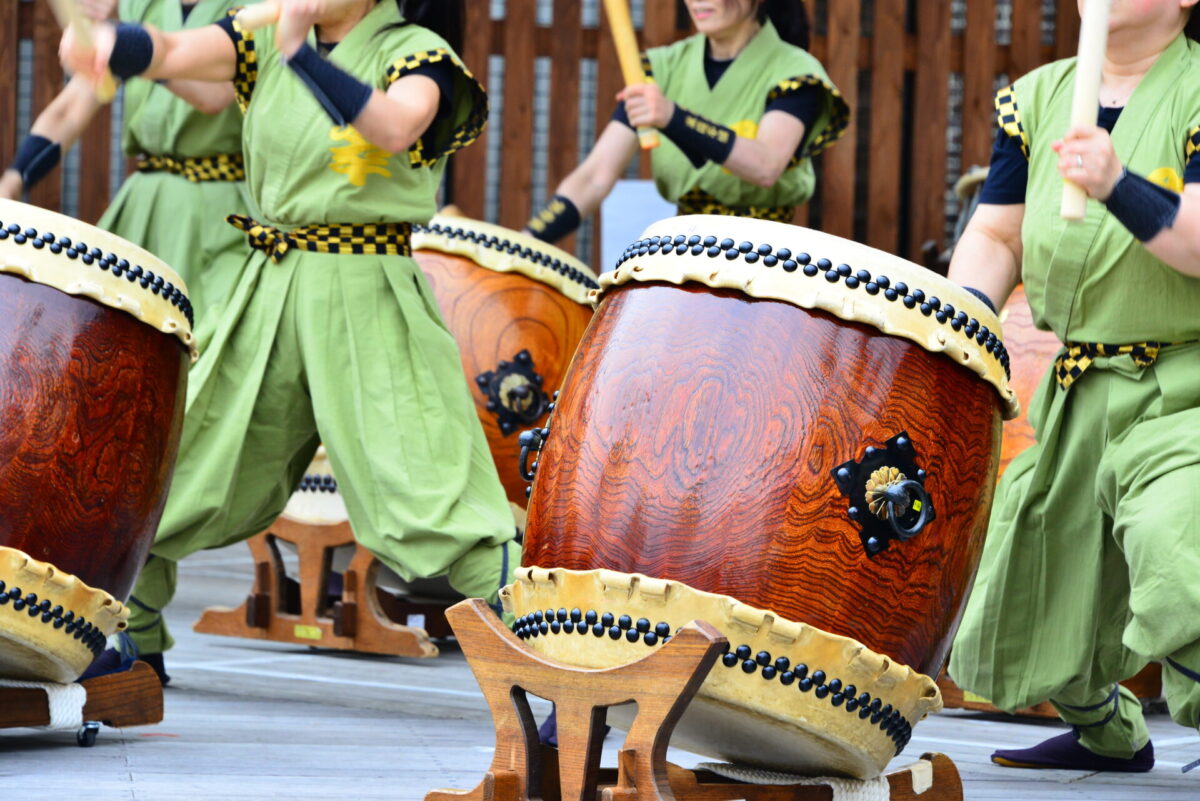
Taiko is a traditional Japanese drum with a long history dating back to the Jomon period (14,000 – 300 B.C). Some historic records show that taiko were used not only as a musical instrument, but also as a way of communication.
In ancient times, the Japanese used the taiko to communicate with each other as well as with their ancestors at special rituals. Today, there are a variety of Japanese taiko in different sizes, shapes and colors used for a wide range of purposes. You can enjoy amazing taiko performances at summer festivals, seasonal events and religious rituals at temples and shrines across Japan.
Taiko drumming is traditionally performed with two wooden drum sticks called bachi (バチ) used by the musicians to hit the drums. The sound of taiko is very simple, yet powerful, and adds great rhythm to any kind of music or song.
Taiko Experience in Tokyo
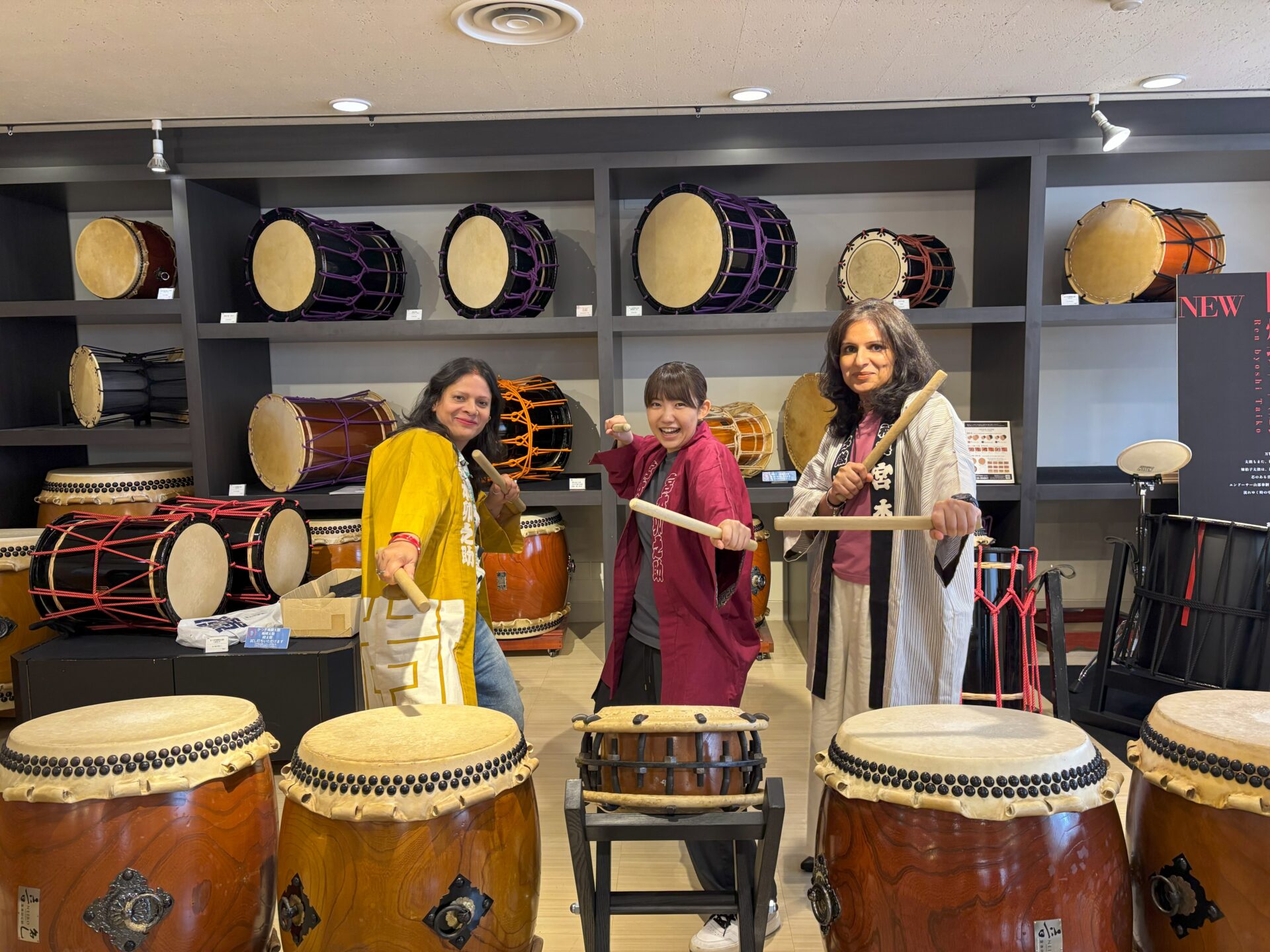
On the Traditional Japanese Drum Experience in Asakusa, you will learn how to play a Japanese drum, wadaiko. Feel the powerful beats and enjoy practicing wadaiko with professionals!
5. Shakuhachi (尺八)
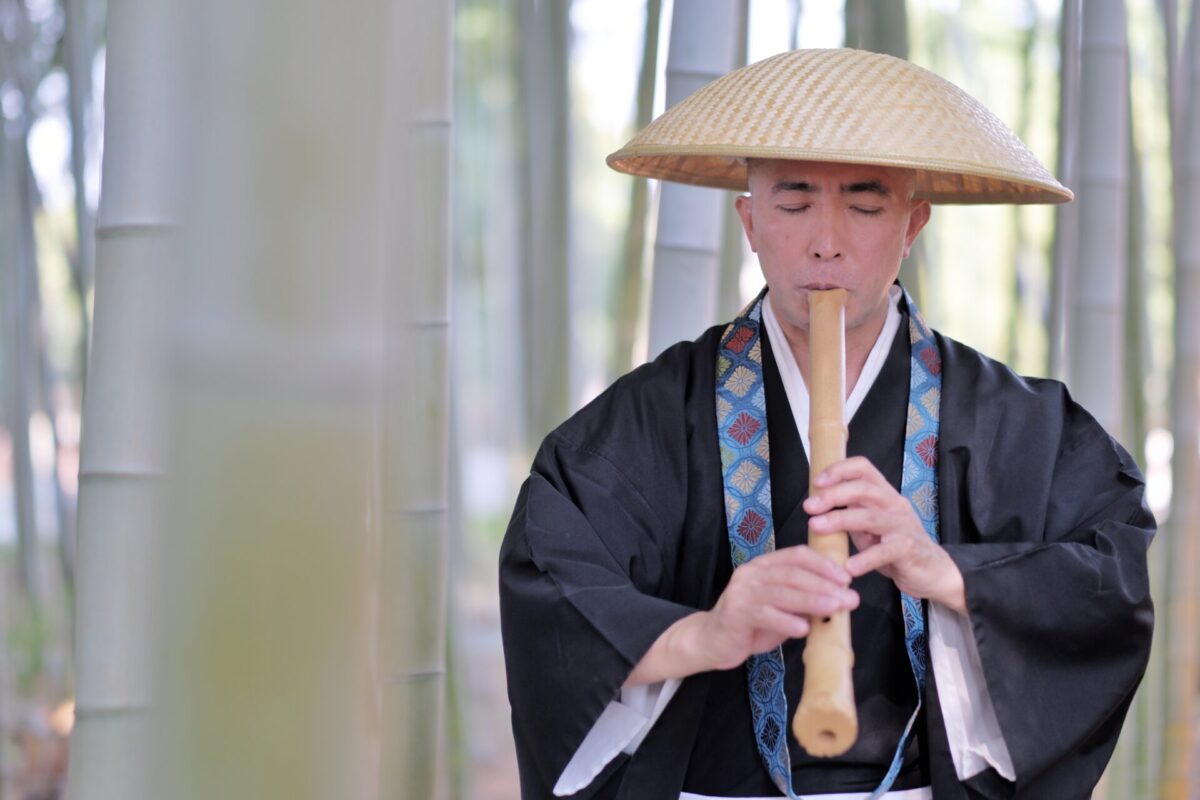
Shakuhachi is a traditional Japanese flute made of bamboo. It derives from a type of Chinese bamboo flute invented by a Buddhist monk and reached Japan in the late 7th century. During that time, shakuhachi was used for gagaku (雅楽), music that was traditionally performed at the imperial court.
Shakuhachi has five finger holes (four holes on the front and one on the back), and players cover the holes with their fingers to produce different sounds. Unlike the western flute, the shakuhachi is held vertically when played. Shinobue (篠笛) is another type of bamboo flute which is very similar to shakuhachi. Shinobue has more finger holes (typically seven) and is played horizontally like a western flute.
6. Kokyu (胡弓)
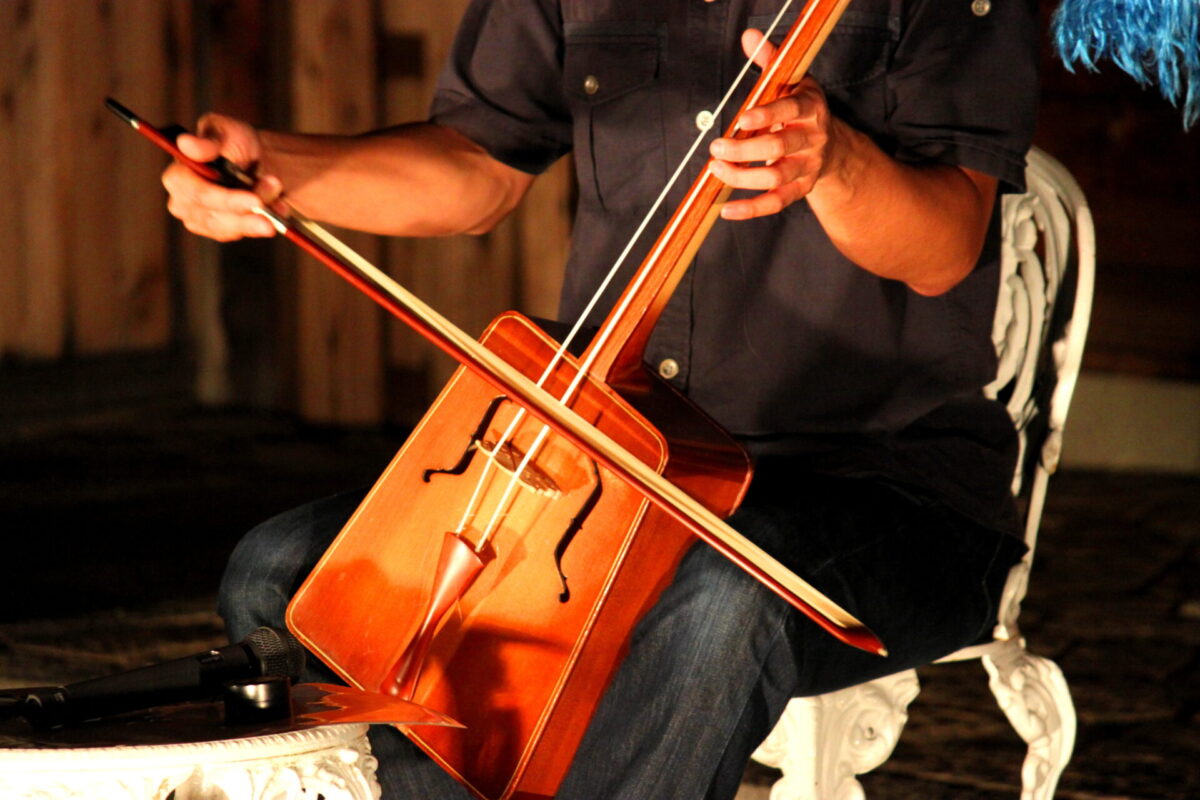
Kokyu is a traditional Japanese string instrument which is played using a bow, and the shape looks very much like the shamisen. The kokyu is known as the only traditional Japanese musical instrument which is played using a bow rather than fingers, fingerpicks or plectrum.
Horse hair is traditionally used to make the bow, and performers hold the small shamisen-like instrument upright on their knees to play. In order to make a clear and beautiful sound, it’s important to move the bow across the three strings vertically in a quick movement, similar to playing the violin.
7. Naruko (鳴子)
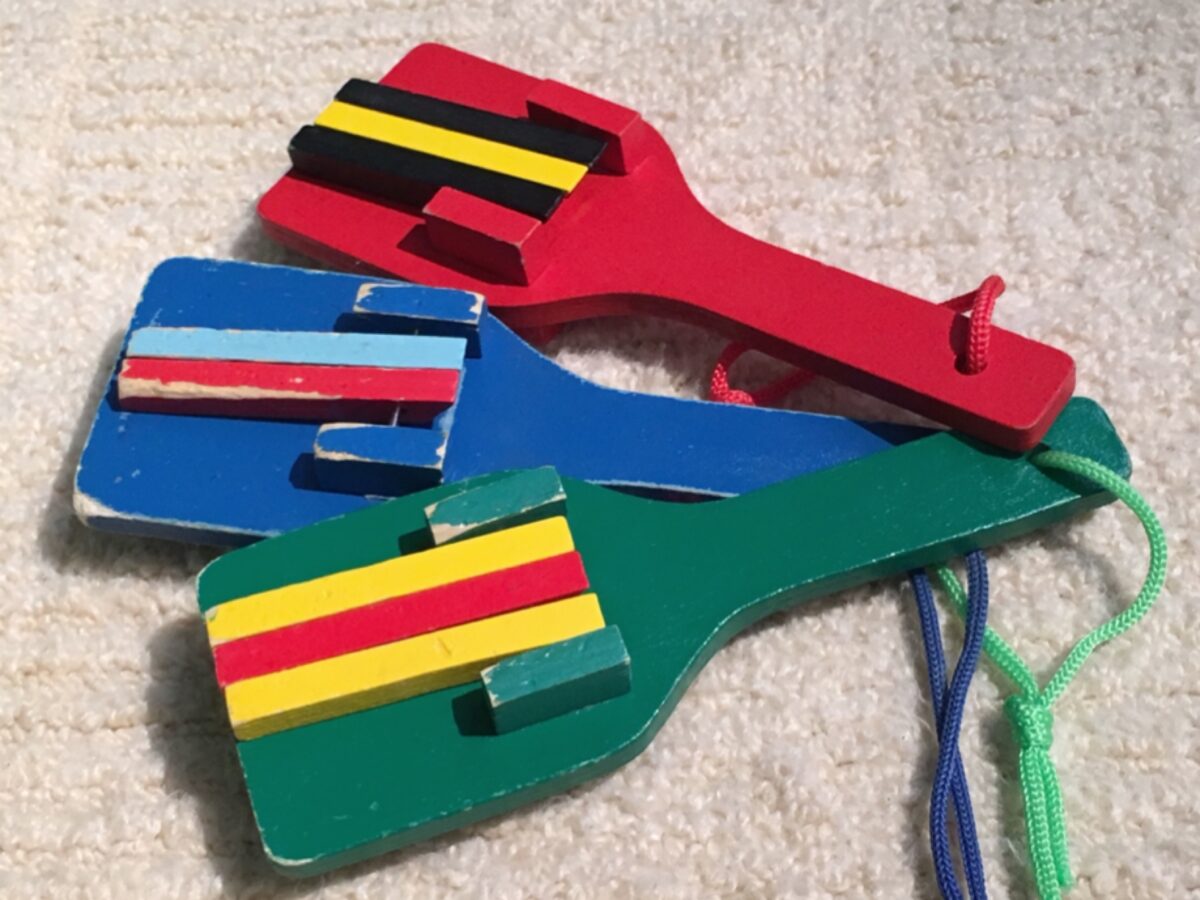
While some musical instruments require professional skill and much practice to play, there are others that are easy to play even for beginners! Naruko is a traditional Japanese percussion instrument which is often seen at festivals. Historically, it was used by farmers to scare birds away from the crops of their fields and farms.
Today, naruko is known as the iconic instrument used in the Yosakoi Dance Festival, a festival held in Kochi Prefecture in mid-August every year, and is basically a small clapping tool made from wood. People participating in the festival hold a naruko in each hand and swing them back and forth to make a clapping sound.
8. Kane (鉦)
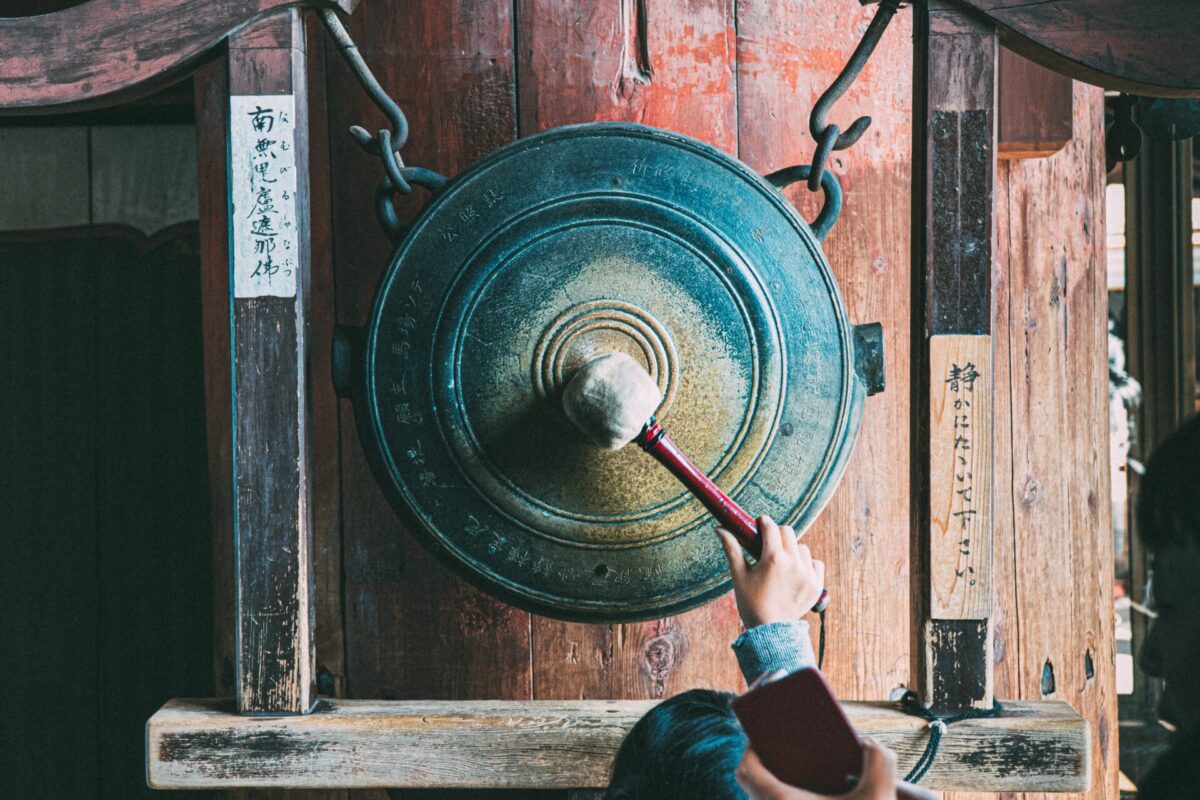
The kane is a small percussion instrument which has been played in Japan and other Asian countries from ancient times. This disc-shaped brass bell originated in China and has been used for a wide range of events in Japan, including gagaku (雅楽), Buddhist ceremonies, traditional festivals and ritual events.
Like other percussion instruments, the kane is generally played by striking it with a mallet made from wood or horn. You can make distinctively different sounds by hitting different parts of the instrument with the mallet. At Awa Odori Festival, which is held annually in Tokushima Prefecture, the kane plays an important role alongside other traditional musical instruments such as taiko drums and shamisen to create rhythmic background music.
From ancient times, traditional Japanese musical instruments have played a big part in Japanese culture, and they produce beautiful sounds completely different from those of western instruments.
If you want to know how they really sound when played, you can find thousands of performance videos by both amateur and professional musicians on the internet. You can also look for private online lessons if you’d like to learn how to play these fascinating musical instruments yourself!
Japanese Instrument Tours
If you are in Japan and are interested in Japanese instruments, it can always be fun to take a tour! Some of the tours not only allow you to experience a live musical performance by professionals but also give you the chance to learn how to play the instrument yourself. This will allow you to dive deeper into the culture and get a feel for the real Japan!
Here are a few tours we recommend:
1. Enjoy Japanese Musical Instruments and Japanese Cuisine in Asakusa
2. Play a Traditional Japanese String Instrument — “Shamisen”
3. Koto Experience and Live Performance at a Japanese-style House in Tokyo
Follow us on Instagram, Facebook, and Twitter for more travel inspiration. Or tag us to get featured!
Happy traveling!
Stay informed of the best travel tips to Japan, the most exciting things to do and see, and the top experiences to have with the Japan Wonder Travel Newsletter. Every week we will introduce you to our latest content.
Other articles you might be interested in
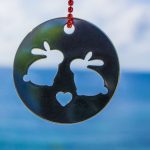
Miho Shimizu is a Japanese freelance writer settled in Shizuoka with her husband and two rabbits. Fascinated with traveling at the age of 18, she has spent most of her long holidays exploring incredible spots around Japan. She also loves to listen to music, draw, and read novels over a cup of green tea.
This post may contain some affiliate links. When you click through and make a purchase we may receive some commission, at no extra cost to you.


